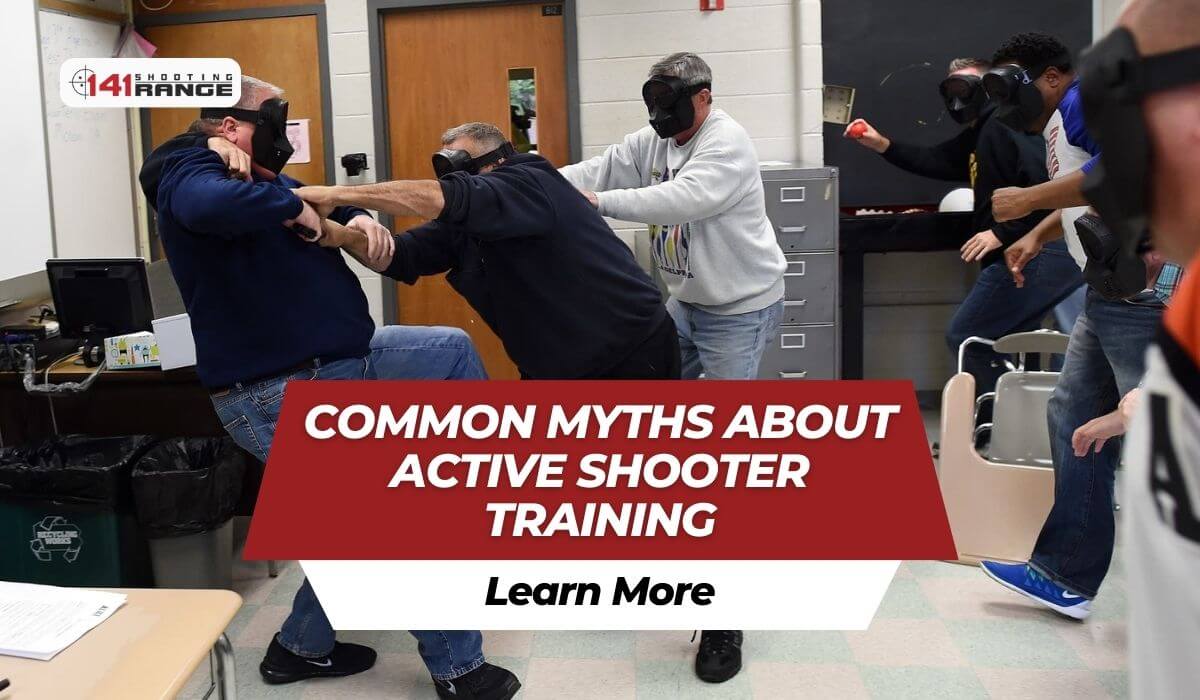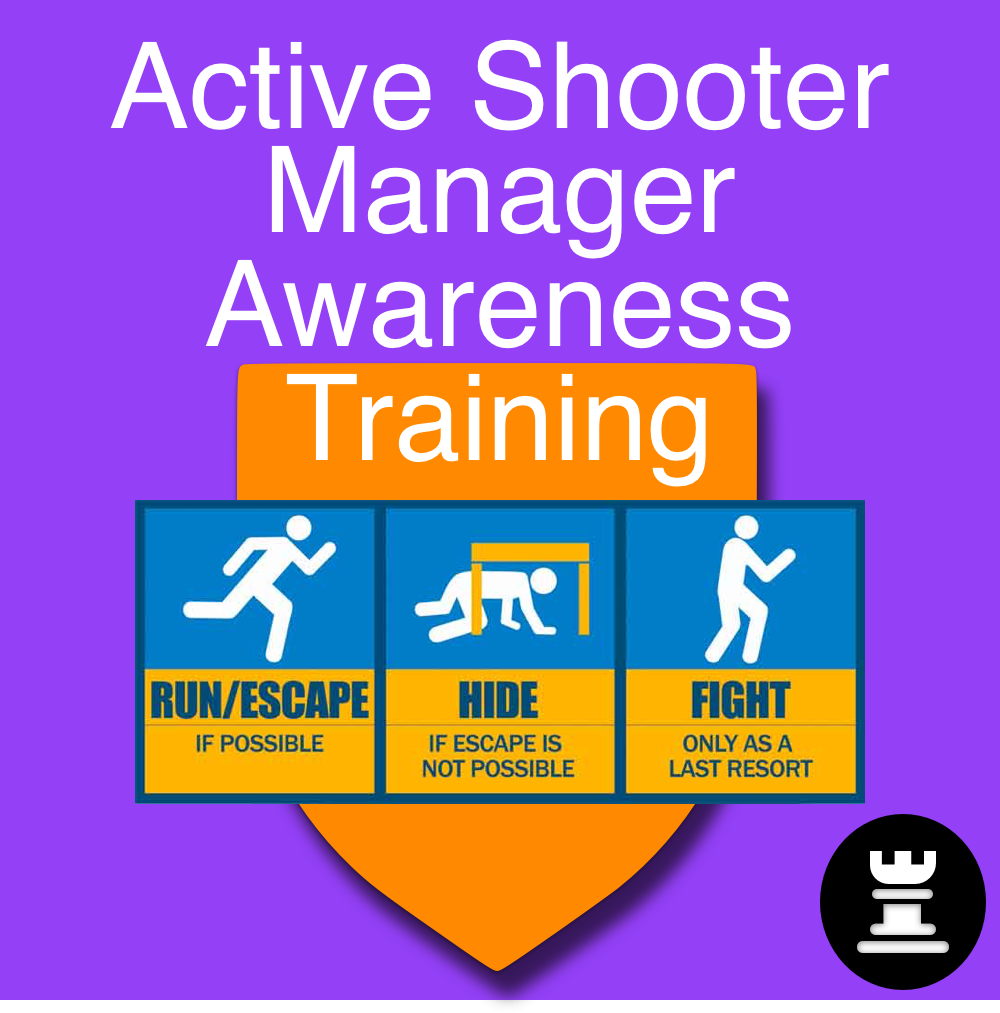Ensuring Public Security with Advanced Active Shooter Training Methods
Ensuring Public Security with Advanced Active Shooter Training Methods
Blog Article
Executing Active Shooter Training: Ideal Practices for Creating a Safe and Prepared Neighborhood Atmosphere
As areas confront the upsetting reality of energetic shooter incidents, the application of thorough training programs becomes essential. A successful technique rests on not only the development of customized curricula that deal with local risks but likewise the participation of diverse stakeholders. By utilizing a selection of training techniques, neighborhoods can guarantee that all members are furnished with crucial abilities. However, the challenge hinges on maintaining a flexible structure that advances with arising hazards. What are the critical elements that can change a typical training program right into a durable design for neighborhood durability?

Comprehending the Requirement for Training
In a period marked by boosting events of violence in public rooms, understanding the need for energetic shooter training has actually never ever been extra vital. The prevalence of mass shootings across numerous environmentsâEUR" such as institutions, workplaces, and buying centersâEUR" underscores the necessity for people and organizations to be planned for such emergency situations. Active shooter scenarios can unfold swiftly, leaving little time for individuals to react successfully. Thorough training initiatives can gear up individuals with the expertise and abilities to react emphatically.
Training fosters a feeling of empowerment and readiness, making it possible for individuals to feel more safe and secure in their environments. The advantages of active shooter training prolong beyond immediate reaction; they include enhancing interaction procedures and improving overall safety steps within organizations.
Trick Parts of Effective Programs
Efficient active shooter training programs incorporate several key parts that enhance readiness and reaction capacities. Detailed educational program advancement is essential, making sure that training content is appropriate, evidence-based, and customized to the particular demands of the organization or neighborhood. This consists of comprehending the characteristics of active shooter occurrences and the psychological effect on people involved.
Second, realistic training situations need to be employed to replicate possible situations, enabling participants to exercise decision-making and response approaches in a controlled atmosphere. These drills facilitate muscle mass memory and develop confidence among individuals.
Third, a concentrate on communication procedures is crucial. Establishing clear lines of interaction amongst law enforcement, emergency responders, and individuals makes certain coordinated responses during an occurrence. Routine updates and correspondence course assist keep communication paths clear and reliable.
Fourth, ongoing examination and responses mechanisms should be integrated into the training program - active shooter training. Evaluating the efficiency of training with individual responses and efficiency metrics permits continual renovation
Lastly, fostering a culture of security and preparedness within the area motivates caution and aggressive procedures, making certain that people are not just experienced yet additionally participated in preserving a safe atmosphere.
Engaging Neighborhood Stakeholders

To effectively engage these stakeholders, it is necessary to connect the goals and advantages of the training. Holding educational sessions can assist make clear the training's function, address problems, and describe the duties each stakeholder may play. Additionally, creating a stakeholder consultatory board can help with recurring dialogue, enabling for varied perspectives and insights to be incorporated right into the training program.
Structure partnerships with community leaders and organizations is likewise critical. Their support can improve outreach initiatives, rise participation, and guarantee that training is tailored to the one-of-a-kind needs of the community. Furthermore, stakeholders can aid in distributing details and sources, strengthening the message of security and readiness.
Inevitably, engaging neighborhood stakeholders not only reinforces the check my source training campaign yet additionally cultivates a sense of ownership among locals, causing an extra resistant and enlightened area with the ability of responding efficiently to prospective hazards.
Training Delivery Methods
Making use of a selection of training distribution approaches is vital to accommodate the diverse discovering designs and requirements of participants in active shooter training programs (active shooter training). Reliable training can take a number of kinds, including talks, hands-on Web Site simulations, on the internet modules, and interactive workshops. Each method serves an unique objective and can boost the general knowing experience

On-line modules supply versatility and accessibility, making it possible for individuals to learn at their very own speed. These can include video clips, quizzes, and discussions to evaluate understanding. Interactive workshops encourage group conversations and problem-solving, advertising synergy and communication skills.
Integrating a combined method that combines these approaches not just enhances the training experience yet also guarantees that individuals are much better prepared to react properly in the event of an active shooter situation (active shooter training). By attending to numerous finding out choices, companies can create a more informed and responsive community
Constant Examination and Renovation
Normal analysis and improvement of energetic shooter training programs are critical to keeping their importance and effectiveness. As risks develop, so should the methods and methods used in training. Continual analysis guarantees that training web content reflects the current knowledge on energetic shooter incidents, including lessons gained from recent occasions and readjusting for emerging fads.
To promote this procedure, companies should develop feedback devices that consist of participant assessments, expert testimonials, and occurrence debriefs. Gathering data on individual performance during drills and workouts is necessary, as it highlights areas needing renovation and informs future training sessions. In addition, involving with police and emergency responders can supply beneficial understandings into the practicality and applicability of training procedures.
Frequently set up testimonials of training products and techniques need to be mandated, promoting an environment of innovation and flexibility. Organizations needs to also motivate a culture of recurring knowing, where team member feel encouraged to recommend adjustments based on their experiences. By dedicating to continuous examination and improvement, organizations not just enhance the performance of their active shooter training programs yet likewise enhance their overall dedication to safety and security and preparedness within the area.
Conclusion
Finally, effective application of energetic shooter additional reading training requires a thorough approach that focuses on community involvement and sensible simulations. By developing customized curricula, including diverse training approaches, and promoting collaboration amongst stakeholders, neighborhoods can enhance readiness. Constant evaluation and comments systems are essential for adjusting programs to emerging risks, consequently reinforcing overall safety. Ultimately, a commitment to continuous training and enhancement grows a society of alertness and preparedness, guaranteeing a much safer atmosphere for all neighborhood members.
Report this page